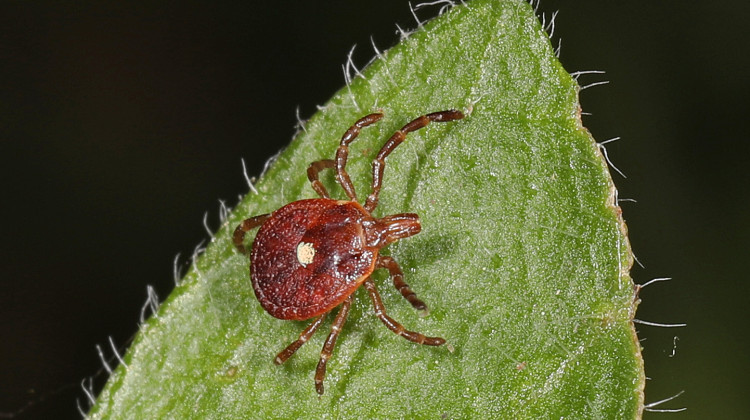
The lone star tick is one of three main disease-carrying ticks in Indiana — along with the black-legged tick and the American dog tick. This tick doesn't carry Lyme disease but can carry other diseases like ehrlichiosis.
Judy Gallagher / Wikimedia CommonsThe state is investigating a fatal case of ehrlichiosis in Floyd County. It’s a tick disease that causes flu-like symptoms, but if left untreated, could kill you. The Indiana Department of Health warns Hoosiers to take precautions against tick bites.
IDOH said Hoosiers are at risk for tick-borne illnesses in every part of the state — and not just Lyme disease. Rocky Mountain Spotted Fever, for example, can be fatal if it’s not treated in the first few days. IDOH urges Hoosiers who feel sick after finding a tick on them to see a doctor immediately. Most tick diseases can be treated with antibiotics.
IDOH said to wear bug spray with DEET when you go outside — or another Environmental Protection Agency-approved ingredient. You should always check for ticks on your body and clothes when you come inside.
READ MORE: How to protect yourself from tick diseases
Join the conversation and sign up for the Indiana Two-Way. Text "Indiana" to 765-275-1120. Your comments and questions in response to our weekly text help us find the answers you need on statewide issues.
If you do find a tick on you, remove it safely with a tweezers — making sure not to crush or burn the tick. You might want to take a picture of the tick to help your doctor narrow down which tick disease it might be, in case you feel sick later on.
These diseases have been on the rise over the past decade. More warm days can allow ticks to feed on people longer during the year. It also allows new disease-carrying ticks — like the Gulf Coast tick — to live farther north than before.
Rebecca is our energy and environment reporter. Contact her at rthiele@iu.edu or follow her on Twitter at @beckythiele.
 DONATE
DONATE








 Support WFYI. We can't do it without you.
Support WFYI. We can't do it without you.